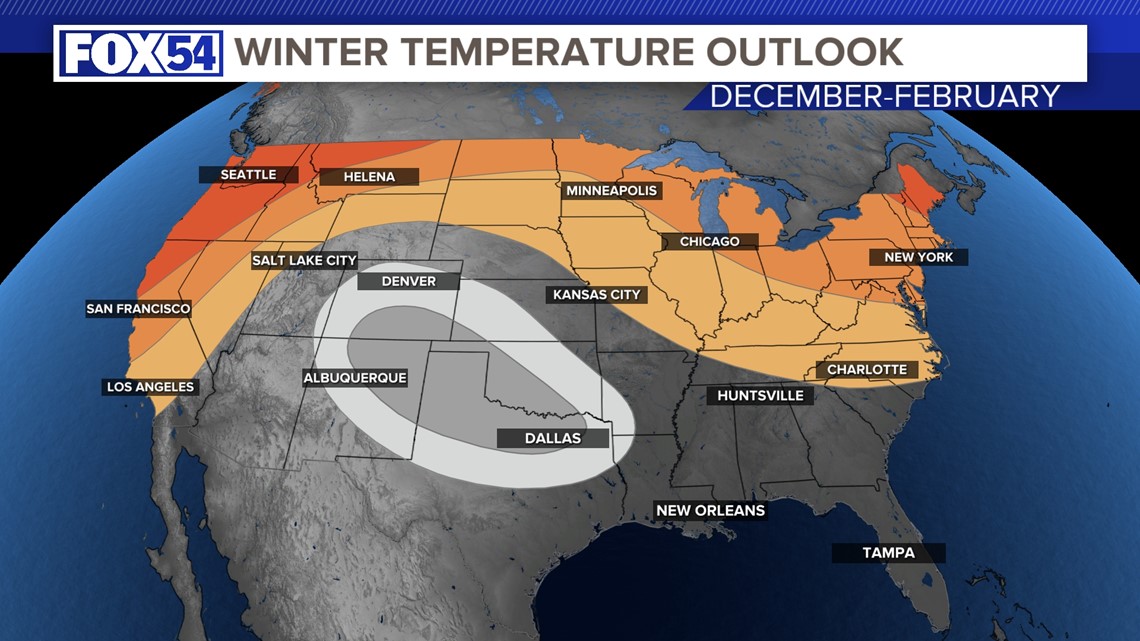HUNTSVILLE, Ala. — This year, El Niño is in place heading into winter for the first time in four years, which will drive the outlook for warmer-than-average temperatures for the northern tier of the continental United States, according to NOAA's U.S. Winter Outlook, which was released today (October 19, 2023) by the Climate Prediction Center -- a division of the National Weather Service.
"These outlooks provide critical guidance on the upcoming season for many industries and sectors of our economy, from energy producers to commodities markets to agricultural interests to tourism." said Sarah Kapnick, Ph. D., NOAA chief scientist. "With a strengthening El Niño and more potential climate extremes in an already record-breaking year, we're lucky to have scientists like those at the Climate Prediction Center helping to build a Weather and Climate-Ready Nation by providing critical operational seasonal climate predictions."
From December through February, NOA predicts wetter-than average conditions for northern Alaska, portions of the West, the southern Plains, Southeast, Gulf Coast and lower mid-Atlantic and drier-than-average conditions across the northern tier of the U.S., especially n the northern Rockies and High Plains and near the Great Lakes.
"An enhanced southern jet stream and associated moisture often present during strong El Niño events supports high odds for above-average precipitation for the Gulf Coast, lower Mississippi Valley and Southeast states this winter." said Jon Gottschalck, chief of the Operational Prediction Branch of the Climate Prediction Center.


Temperature
- Warmer-than-average temperatures are favored across the northern tier of the U.S. and much of the far west.
- The greatest odds for warmer-than-average conditions are in Alaska, the Pacific Northwest and northern New England.
- Near-normal seasonal mean temperatures are most likely for a region from the south-central Rockies to the southern Plains.
- Remaining areas fall into the category of equal chances for below-, near-, or above-average seasonal mean temperatures.


Precipitation
- Wetter-than-average conditions are most likely in northern Alaska, some areas of the West from parts of California to the south-central Rockies, the southern Plains, Gulf Coast, Southeast and lower mid-Atlantic.
- The greatest odds for drier-than-average conditions are forecast in portions of the northern Rockies and central Great Lakes region, especially for Michigan and northern Ohio and Indiana.
- Much of the central portion of the U.S. falls into the category of equal chances for below-, near-, or above-average seasonal total precipitation.
About NOAA's Seasonal Outlooks
NOAA's seasonal outlooks provide the likelihood that temperatures and total precipitation amounts will be above-, near-, or below-average. The outlook does not project seasonal snowfall accumulations as snow forecasts are generally not predictable more than a week in advance.
NOAA's Climate Prediction Center updates the three-month outlook each month. The next update will be available November 16.
Seasonal outlooks help communities prepare for what is likely to come in the months ahead and minimize weather's impacts on lives and livelihoods. Resources such as drought.gov and climate.gov provide comprehensive tools to better understand and plan for climate-driven hazards. Empowering people with actionable forecasts, seasonal predictions and winter weather safety tips is key to NOAA's effort to build a more Weather- and Climate-Ready Nation.

